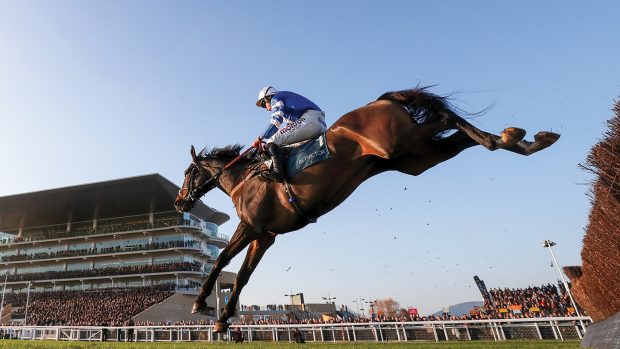A “substantial and significant” review sparked by the deaths of six horses at this year’s Cheltenham Festival has made 17 recommendations for improved safety in jump racing.
The report, published today (12 Dec) by the British Horseracing Authority (BHA), found “no single factor” responsible for the high number of fatalities at the four-day meeting in March 2018.
Recommendations were broadened to encompass all jump racing in the UK after the 67-page document revealed that non-track risk factors were potentially of “equal or greater significance” than track-related factors.
“The report itself has found that non-track factors are likely to be contributing to risk at Cheltenham, and the same may be true across all of jump racing,” said the BHA’s chief regulatory officer Brant Dunshea.
“For this reason this project has become a springboard for wider research to better identify risk factors in jump racing, above and beyond the continuous programme of innovation and improvement which has made the sport significantly safer in the last 20 years.”
The review encompassed every race run at the Festival between 2007 and 2018, involving a detailed analysis of some 5,451 runners and 308 fallers. Input was invited from external experts including the RSPCA and World Horse Welfare.
Significant recommendations included a “major research project” to develop a predictive model for both on and off-course risk factors. “to assist policy and welfare reforms in the future”.
“A timeline and project plan [is] to be developed as soon as possible, enabling this work to begin in early 2019,” the report said.
The BHA will also analyse faller rates by trainer and jockey, and “engage constructively” with anyone found to have an incidence “significantly higher than the historical average”.
Other key proposals include the ramping-up of veterinary regulation, with medication declaration forms covering six months of treatment to be submitted before each race, as well as pre-race examinations of every horse running at the Festival.
The report also recommended the reduction of runners in all two-mile steeple chases from 24 to 20 — a response to the three fatalities in this year’s Cheltenham Grand Annual Chase.
The report comes as the BHA has been responding to increasing public pressure over race safety: in October MPs debated the issue after a petition calling on the government to set up a new independent equine welfare regulator gained more than 100,000 signatures.
Nick Rust, chief executive of the BHA, said that British racing had “consistently and continuously improved its record on welfare outcomes over the last decade”.
“However,” he added, “Parliament has recently sent a clear message to our sport that we must raise our ambitions for welfare further. At the BHA, we share this view, and I am today calling on everyone in the sport to help us achieve even higher goals for welfare.
Continues below…

BHA will review horse deaths at Cheltenham Festival
Five horses had to be euthanased during the first two days of the festival, prompting criticism from animal welfare groups

Cheltenham race abandoned due to heat
A race at Cheltenham was abandoned due to the high temperatures.

Subscribe to Horse & Hound magazine today – and enjoy unlimited website access all year round
“The Cheltenham review helps demonstrate our sport’s commitment towards higher goals, but it is far from the end of our ambitions on this front. A cross-industry welfare board is currently being formed, with the intention of delivering a new strategy for the sport.
“I hope that everyone involved in British racing will join us in working to further enhance our good track record, and ensuring the sport remains relevant, understood, accepted and embraced by the British public.”
Read the 17 recommendations in full
For all the latest news analysis, competition reports, interviews, features and much more, don’t miss Horse & Hound magazine, on sale every Thursday.





